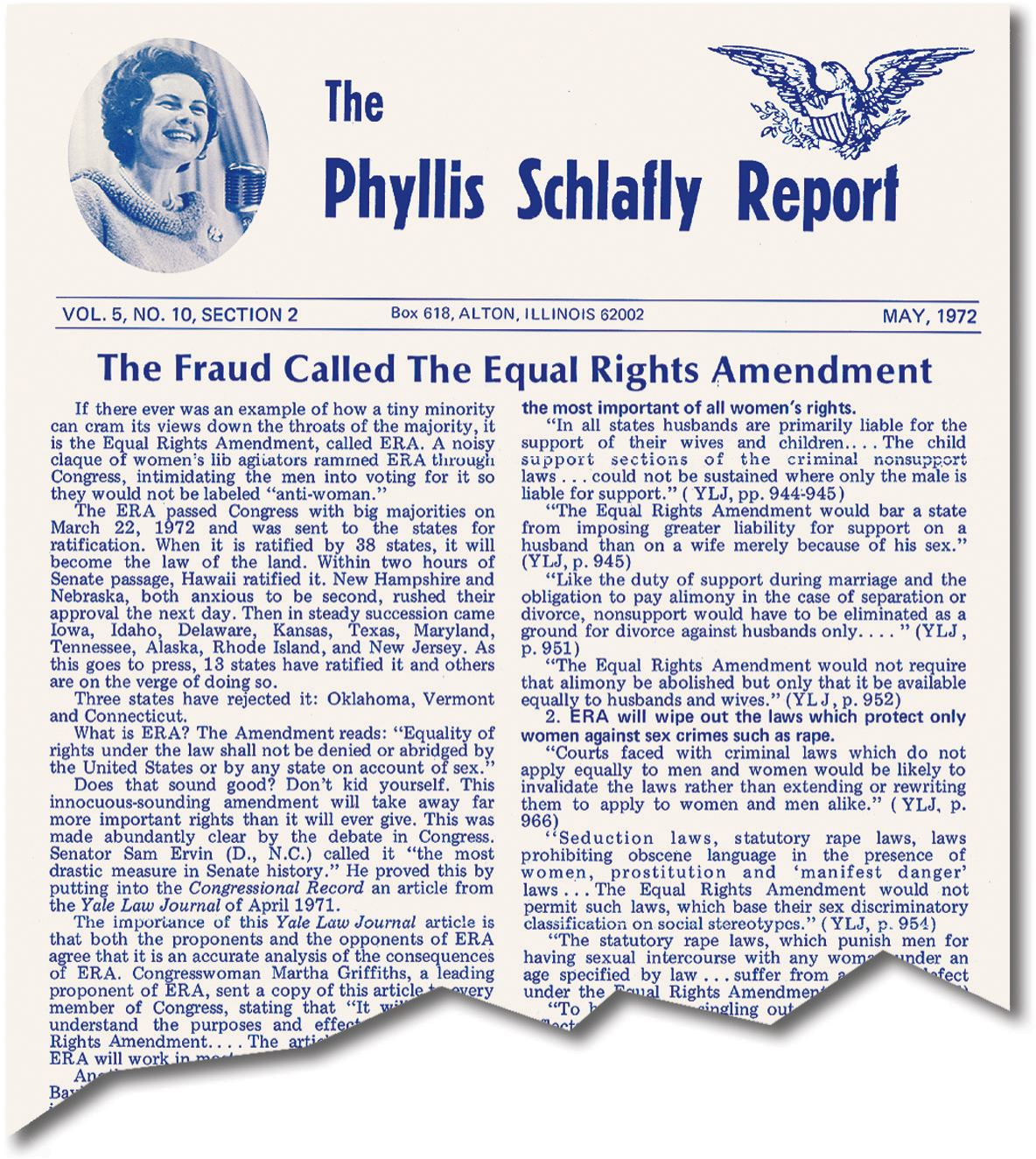America Moves to the Right, 1969–1989

Printed Page 821 Chapter Chronology
America Moves to the Right, 1969-1989

QUICK START
Quickly learn what is important in this chapter by doing the following:
- READ the Chapter Outline to see how the chapter is organized.
- SKIM the Chronology to see what will be covered.
When you are ready, download the Guided Reading Exercise, then read the chapter and the Essential Questions for each section and complete the Guided Reading Exercise as you go. Then use LearningCurve and the Chapter Review to check what you know.
Hearing Republican Barry Goldwater address the National Federation of Republican Women in 1963 was for Phyllis Schlafly "one of the most exciting days of my life." Like Goldwater, Schlafly wanted the United States to do more than just contain communism — they wanted to eliminate that threat entirely. They also wanted to cut back the federal government, especially its role in providing social welfare and enforcing civil rights. Goldwater's loss to Lyndon Johnson in 1964 did not diminish Schlafly's conservative commitment. She added new issues to the conservative agenda, cultivating a grassroots movement that would redefine the Republican Party and American politics into the twenty-first century.
Phyllis Stewart was born in St. Louis in 1924, attended Catholic schools, and worked her way through Washington University testing ammunition at a World War II defense plant. After earning a master's degree in government from Radcliffe College, she worked at the American Enterprise Institute, where she imbibed the think tank's conservatism. Returning to the Midwest, she married Fred Schlafly, an Alton, Illinois, attorney, and bore six children. "I don't think there's anything as much fun as taking care of a baby," Schlafly claimed.

Yet while insisting that caring for home and family was women's most important career, Schlafly spent much of her time writing, speaking, leading Republican women's organizations, and testifying before legislative committees. She ran twice for Congress but lost in her heavily Democratic district in Illinois. Her book, A Choice Not an Echo, pushed Barry Goldwater for president and sold more than three million copies. In 1967, she began publishing The Phyllis Schlafly Report, a monthly newsletter about current political issues. Throughout the 1950s and 1960s, Schlafly advocated stronger efforts to combat communism, a more powerful military, and a government less active in domestic affairs.
In the 1970s, Schlafly began to address new issues, including feminism, abortion, gay rights, busing for racial integration, and religion in the schools. Her ideas resonated with those who were fed up with the expansion of government, liberal Supreme Court decisions, protest movements, and the loosening of moral standards that seemed to define the 1960s. Although Richard Nixon did not embrace the entire conservative agenda, he sought to make the Republicans the dominant party by appealing to disaffected blue-collar and southern white Democrats. The Watergate revelations forced Nixon to resign the presidency in 1974, and his Republican successor, Gerald Ford, served only two years, but the rightward shift of the political spectrum continued even when Democrat Jimmy Carter captured the White House in 1976. Carter advanced environmental and energy legislation, but an economy beset by both inflation and unemployment and a crisis in U.S.-Iranian relations burdened his campaign for reelection.
Consequently, Phyllis Schlafly's call for "a choice not an echo" was realized when Ronald Reagan won the presidency in 1980. Cutting taxes and government regulations, trimming social programs, expanding the nation's military capacity, and pressuring the Soviet Union and communism in the third world, Reagan addressed the hopes of traditional conservatives. Like Schlafly, he also championed the concerns of Christian conservatives, opposing abortion and sexual permissiveness as well as supporting a larger role for religion in public life.
Reagan's goals encountered resistance from feminists, civil rights groups, environmentalists, and others, and he failed to enact the entire conservative agenda. Although he enormously increased the national debt and engaged in illegal activities to thwart communism in Latin America, his popularity boosted the Republican Party. And Reagan's optimism and spirited leadership contributed to a revival in national pride and confidence.